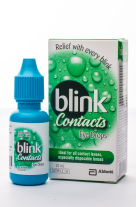
Debunking the Misconception: High Intraocular Pressure Does Not Always Mean Glaucoma
Glaucoma is a complex and potentially blinding eye condition that affects millions of people worldwide. It is often associated with high intraocular pressure (IOP), which is the pressure inside the eye. However, there is a common misconception that high IOP is synonymous with glaucoma, when in fact, it is just one of the risk factors and not always indicative of glaucoma. In this article, we will explore this misconception and shed light on the relationship between IOP and glaucoma, along with other important factors to consider in the diagnosis and management of this sight-threatening condition.
Glaucoma is a group of eye diseases that cause damage to the optic nerve, which is responsible for transmitting visual signals from the eye to the brain. The most common type of glaucoma, known as primary open-angle glaucoma, develops slowly and often without noticeable symptoms until the disease has advanced. It is characterized by progressive damage to the optic nerve, resulting in visual field loss and potentially leading to irreversible blindness if left untreated.
IOP has long been recognized as a significant risk factor for glaucoma. In a healthy eye, there is a delicate balance between the production and drainage of aqueous humor, the clear fluid that fills the front part of the eye and helps maintain IOP. When the drainage system of the eye becomes impaired or inefficient, it can lead to an increase in IOP, which can put additional stress on the optic nerve and potentially cause damage over time.
However, it is important to note that not all individuals with high IOP develop glaucoma, and not all individuals with glaucoma have high IOP. In fact, some people with normal or even low IOP may still develop glaucoma, while others with high IOP may never develop the condition. This is because the relationship between IOP and glaucoma is complex, and other factors also play a crucial role in the development and progression of the disease.
One such factor is the optic nerve head anatomy. The optic nerve head is the part of the optic nerve that enters the eye and is responsible for transmitting visual signals. Some individuals may have an optic nerve head that is more susceptible to damage from elevated IOP, while others may have a more resilient optic nerve head that can tolerate higher IOP levels without developing glaucoma.
Additionally, other risk factors such as age, ethnicity, family history, and overall health status can also influence the development and progression of glaucoma. For example, older individuals, people of African, Hispanic, or Asian descent, individuals with a family history of glaucoma, and those with certain medical conditions such as diabetes or cardiovascular disease may be at higher risk of developing glaucoma, regardless of their IOP levels.
Furthermore, glaucoma is often referred to as a "silent thief of sight" because it typically progresses slowly and does not cause noticeable symptoms until later stages. This means that by the time symptoms become apparent, irreversible damage to the optic nerve may have already occurred. Therefore, relying solely on IOP measurements as an indicator of glaucoma can be misleading and may result in missed or delayed diagnosis.
To diagnose glaucoma accurately, eye care professionals use a comprehensive approach that involves assessing multiple factors, including IOP, optic nerve head appearance, visual field testing, and other relevant risk factors. A thorough eye examination, often including specialized tests such as optical coherence tomography (OCT) and visual field testing, is necessary to detect glaucoma and monitor its progression over time.
The management of glaucoma typically involves a combination of strategies aimed at lowering IOP, such as eye drops, laser procedures, or surgery, depending on
In same category
Screen Time and Your Family’s Eye Health: Finding the Right Balance
In today’s digital age, screens are a big part of our daily lives. From work to entertainment and education, screens have become indispensable. However, as...
What is Arcus Senilis also know as Cholesterol Rings ? : A Sign of Aging Eyes
From Metal to Wood: Finding the right pair of glasses
Discover the World of Eyewear Materials: The seemingly simple choice of eyewear frames goes beyond mere aesthetics, profoundly influencing our daily lives in terms of...




































